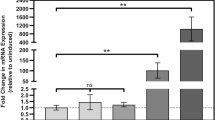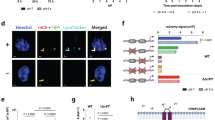Abstract
Mycobacterium tuberculosis is exposed to diverse stresses inside the host during dormancy. Meanwhile, many metabolic and transcriptional regulatory changes occur, resulting in physiological modifications that help M. tuberculosis to adapt to these stresses. The same physiological changes also cause antibiotic tolerance in dormant M. tuberculosis. However, the transcriptional regulatory mechanism of antibiotic tolerance during dormancy remains unclear. Here, we showed that the expression of Rv1255c, an uncharacterised member of the tetracycline repressor family of transcriptional regulators, is upregulated during different stresses and hypoxia-induced dormancy. Antibiotic tolerance and efflux activities of Mycobacterium smegmatis constitutively expressing Rv1255c were analysed, and interestingly, it showed increased isoniazid tolerance and efflux activity. The intrabacterial isoniazid concentrations were found to be low in M. smegmatis expressing Rv1255c. Moreover, orthologs of the M. tuberculosis katG, gene of the enzyme which activates the first-line prodrug isoniazid, are overexpressed in this strain. Structural analysis of isoforms of KatG enzymes in M. smegmatis identified major amino acid substitutions associated with isoniazid resistance. Thus, we showed that Rv1255c helps M. smegmatis tolerate isoniazid by orchestrating drug efflux machinery. In addition, we showed that Rv1255c also causes overexpression of katG isoform in M. smegmatis which has amino acid substitutions as found in isoniazid-resistant katG in M. tuberculosis.
This is a preview of subscription content, access via your institution
Access options
Subscribe to this journal
Receive 12 print issues and online access
$259.00 per year
only $21.58 per issue
Buy this article
- Purchase on Springer Link
- Instant access to full article PDF
Prices may be subject to local taxes which are calculated during checkout





Similar content being viewed by others
References
Bates JH, Stead WW. The history of tuberculosis as a global epidemic. Med Clin North Am. 1993;77:1205–17.
WHO. Global Tuberculosis Report 2020 – World. ReliefWeb. 2020;1–232.
World Health Organization. Global Tuberculosis Report 2021. Geneva: ©World Health Organization; 2021. p 57.
Gengenbacher M, Kaufmann SHE. Mycobacterium tuberculosis: success through dormancy. FEMS Microbiol Rev. 2012;36:514–32.
Trutneva KA, Shleeva MO, Demina GR, Vostroknutova GN, Kaprelyans AS. One-year old dormant, “non-culturable” Mycobacterium tuberculosis preserves significantly diverse protein profile. Front Cell Infect Microbiol. 2020;10:26.
Wayne LG, Sohaskey CD. Nonreplicating persistence of Mycobacterium tuberculosis. Annu Rev Microbiol. 2001;55:139–63.
Gopinath V, Raghunandanan S, Gomez RL, Jose L, Surendran A, Ramachandran R, et al. Profiling the proteome of Mycobacterium tuberculosis during dormancy and reactivation. Mol Cell Proteom. 2015;14:2160–76.
Wayne LG, Hayes LG. An in vitro model for sequential study of shiftdown of Mycobacterium tuberculosis through two stages of nonreplicating persistence. Infect Immun. 1996;64:2062–9.
Ojha AK, Baughn AD, Sambandan D, Hsu T, Trivelli X, Guerardel Y, et al. Growth of Mycobacterium tuberculosis biofilms containing free mycolic acids and harbouring drug-tolerant bacteria. Mol Microbiol. 2008;69:164–74.
Flentie K, Harrison GA, Tükenmez H, Livny J, Good JAD, Sarkar S, et al. Chemical disarming of isoniazid resistance in Mycobacterium tuberculosis. Proc Natl Acad Sci USA. 2019;116:10510–7.
Voskuil MI, Bartek IL, Visconti K, Schoolnik GK. The response of Mycobacterium tuberculosis to reactive oxygen and nitrogen species. Front Microbiol. 2011;2:105.
Deb C, Lee C-M, Dubey VS, Daniel J, Abomoelak B, Sirakova TD, et al. A novel in vitro multiple-stress dormancy model for Mycobacterium tuberculosis generates a lipid-loaded, drug-tolerant, dormant pathogen. PLoS One. 2009;4:e6077.
Shastri MD, Shukla SD, Chong WC, Dua K, Peterson GM, Patel RP, et al. Role of oxidative stress in the pathology and management of human tuberculosis. Oxid Med Cell Longev. 2018;2018:7695364.
Li G, Zhang J, Guo Q, Jiang Y, Wei J, Zhao LL, et al. Efflux pump gene expression in multidrug-resistant Mycobacterium tuberculosis clinical isolates. PLoS One. 2015;10:e0119013.
Bhandol H, Alindogan J, De Guzman A, Lim R. Review: Structure and transcriptional regulation of the Acr efflux pumps and their role in antibiotic resistance in Escherichia coli. Undergrad J Exp Microbiol Immunol. 2020;6:1–16.
Liu J, Shi W, Zhang S, Hao X, Maslov DA, Shur KV, et al. Mutations in efflux pump Rv1258c (Tap) cause resistance to pyrazinamide, isoniazid, and streptomycin in M. tuberculosis. Front Microbiol. 2019;10:216.
Liu H, Yang M, He Z-G. Novel TetR family transcriptional factor regulates expression of multiple transport-related genes and affects rifampicin resistance in Mycobacterium smegmatis. Sci Rep. 2016;6:27489.
Remm S, Earp JC, Dick T, Dartois V, Seeger MA. Critical discussion on drug efflux in Mycobacterium tuberculosis. FEMS Microbiol Rev. 2022;46:fuab050.
Balhana RJC, Singla A, Sikder MH, Withers M, Kendall SL. Global analyses of TetR family transcriptional regulators in mycobacteria indicates conservation across species and diversity in regulated functions. BMC Genomics. 2015;16:1–12.
Luo L, Zhu L, Yue J, Liu J, Liu G, Zhang X, et al. Antigens Rv0310c and Rv1255c are promising novel biomarkers for the diagnosis of Mycobacterium tuberculosis infection. Emerg Microbes Infect. 2017;6:1–8.
Rustad TR, Harrell MI, Liao R, Sherman DR. The enduring hypoxic response of Mycobacterium tuberculosis. PLoS One. 2008;3:e1502.
Sun X, Zhang L, Jiang J, Ng M, Cui Z, Mai J, et al. Transcription factors Rv0081 and Rv3334 connect the early and the enduring hypoxic response of Mycobacterium tuberculosis. Virulence. 2018;9:1468.
Galagan JE, Minch K, Peterson M, Lyubetskaya A, Azizi E, Sweet L, et al. The Mycobacterium tuberculosis regulatory network and hypoxia. Nature. 2013;499:178–83.
Martin A, Camacho M, Portaels F, Palomino JC. Resazurin microtiter assay plate testing of Mycobacterium tuberculosis susceptibilities to second-line drugs: rapid, simple, and inexpensive method. Antimicrob Agents Chemother. 2003;47:3616.
Pal S, Misra A, Banerjee S, Dam B. Adaptation of ethidium bromide fluorescence assay to monitor activity of efflux pumps in bacterial pure cultures or mixed population from environmental samples. J King Saud Univ Sci. 2020;32:939–45.
Valdivia RH, Hromockyj AE, Monack D, Ramakrishnan L, Falkow S. Applications for green fluorescent protein (GFP) in the study of host-pathogen interactions. Gene. 1996;173:47–52.
Jose L, Ramachandran R, Bhagavat R, Gomez RL, Chandran A, Raghunandanan S, et al. Hypothetical protein Rv3423.1 of Mycobacterium tuberculosis is a histone acetyltransferase. FEBS J. 2016;283:265–81.
Meng EC, Pettersen EF, Couch GS, Huang CC, Ferrin TE. Tools for integrated sequence-structure analysis with UCSF Chimera. BMC Bioinforma. 2006;7:1–10.
Engohang-Ndong J, Baillat D, Aumercier M, Bellefontaine F, Besra GS, Locht C, et al. EthR, a repressor of the TetR/CamR family implicated in ethionamide resistance in mycobacteria, octamerizes cooperatively on its operator. Mol Microbiol. 2004;51:175–88.
Ramos JL, Martínez-Bueno M, Molina-Henares AJ, Terán W, Watanabe K, Zhang X, et al. The TetR family of transcriptional repressors. Microbiol Mol Biol Rev. 2005;69:326–56.
Bollela VR, Namburete EI, Feliciano CS, Macheque D, Harrison LH, Caminero JA. Detection of katG and inhA mutations to guide isoniazid and ethionamide use for drug-resistant tuberculosis. Int J Tuberc Lung Dis. 2016;20:1099.
Ai JW, Ruan QL, Liu QH, Zhang WH. Updates on the risk factors for latent tuberculosis reactivation and their managements. Emerg Microbes Infect. 2016;5:e10.
Gomez RL, Jose L, Ramachandran R, Raghunandanan S, Muralikrishnan B, Johnson JB, et al. The multiple stress responsive transcriptional regulator Rv3334 of Mycobacterium tuberculosis is an autorepressor and a positive regulator of kstR. FEBS J. 2016;283:3056–71.
Ramaswamy S, Musser JM. Molecular genetic basis of antimicrobial agent resistance in Mycobacterium tuberculosis: 1998 update. Tube Lung Dis. 1998;79:3–29.
Gao CH, Wei WP, Tao HL, Cai LK, Jia WZ, Hu L, et al. Cross-talk between the three furA orthologs in Mycobacterium smegmatis and the contribution to isoniazid resistance. J Biochem. 2019;166:237–43.
Barozi V, Musyoka TM, Sheik Amamuddy O, Tastan Bishop Ö. Deciphering isoniazid drug resistance mechanisms on dimeric Mycobacterium tuberculosis KatG via post-molecular dynamics analyses including combined dynamic residue network metrics. ACS Omega. 2022;7:13313–32.
Acknowledgements
JGR thanks the Department of Science and Technology, Government of India, for the INSPIRE fellowship. KK thanks the Department of Biotechnology, Government of India for the Ramalingaswami fellowship. RAK is grateful to the Department of Biotechnology, Government of India for financial support.
Author information
Authors and Affiliations
Corresponding author
Ethics declarations
Conflict of interest
The authors declare no competing interests.
Additional information
Publisher’s note Springer Nature remains neutral with regard to jurisdictional claims in published maps and institutional affiliations.
Supplementary information
Rights and permissions
Springer Nature or its licensor (e.g. a society or other partner) holds exclusive rights to this article under a publishing agreement with the author(s) or other rightsholder(s); author self-archiving of the accepted manuscript version of this article is solely governed by the terms of such publishing agreement and applicable law.
About this article
Cite this article
Gopi Reji, J., K. Edison, L., Raghunandanan, S. et al. Rv1255c, a dormancy-related transcriptional regulator of TetR family in Mycobacterium tuberculosis, enhances isoniazid tolerance in Mycobacterium smegmatis. J Antibiot 76, 720–727 (2023). https://doi.org/10.1038/s41429-023-00661-8
Received:
Revised:
Accepted:
Published:
Issue Date:
DOI: https://doi.org/10.1038/s41429-023-00661-8



